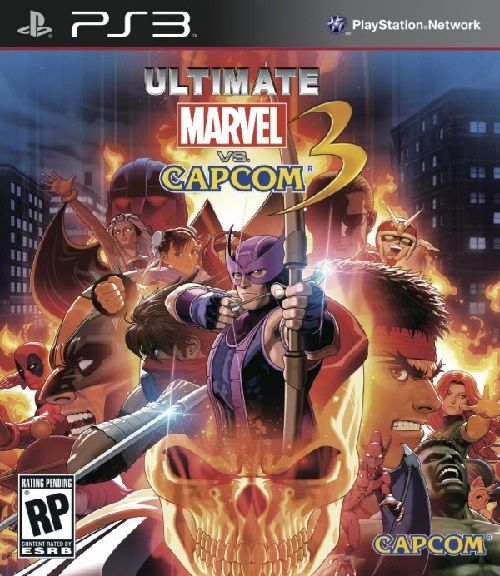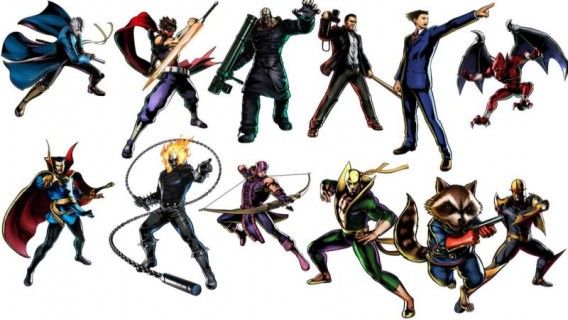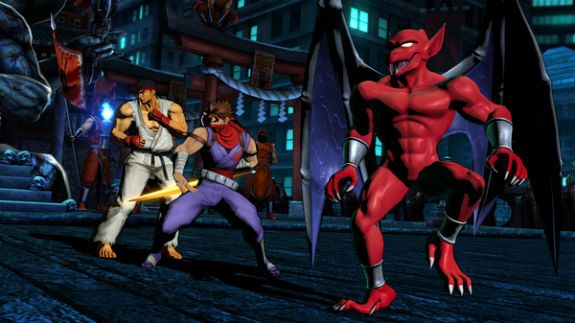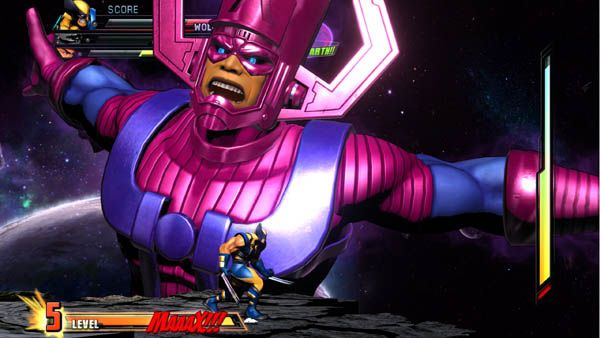When Ultimate Marvel vs. Capcom 3 was announced, many fans thought that developer Capcom had taken their notorious fighting game re-releases to a jaw dropping new level. Vanilla Marvel vs. Capcom 3 just came out in February after all, and the many nuances of high level fighting game competition aren’t revealed after such a short time. Just look at how long Marvel vs. Capcom 2 has been played competitively. So is this the merciless cash grab that some believe it is or is it a legitimate update that is not to be missed by fans? Read on to find out.
The additions to Ultimate Marvel vs. Capcom 3 can be numbered. The biggest, most obvious difference is the addition of twelve new characters. For the most part, each of these characters is a valid addition to the roster. I’ve taken a particular liking to Nemesis T-Type, who trades mobility and variety for serious damage. One of his basic combos ending with Bioweapon Assault is probably the easiest way to cause 650,000 damage in the entire game. With the proper assisting, his mobility is much less of a problem also. Other characters such as Vergil are fan favorites and see tons of use online. Many of the new characters have unique game-play styles, such as Phoenix Wright who has to find evidence to execute his more powerful moves and Frank West who becomes stronger as he snaps pictures of his opponent. All in all, each of the new characters brings something unique to the game and this is definitely a good thing.
The second biggest addition to the game is no doubt the spectator mode. Noticeably absent from the first game, fans cried out in anger as we joined lobbies and could not watch the fights. The reason a spectator mode is essential in fighting games is explained in this editorial. Whatever issue Capcom had with putting it in the first game was resolved and now when you join a lobby, you can sit back and enjoy the matches while you wait for your turn. Don’t think that I’m heaping praise on the game because it included a feature that is pretty much a fighting game staple, but it definitely makes a difference if you played the first game. There is still no replay system, but was probably asking too much.
All characters received game-play adjustments, at varying degrees of severity. Some good characters were made better and some bad characters were made worse. Reversely, some mid-tier characters received some well needed buffs and some allegedly overpowered characters (*cough*DarkPhoenix*cough*) were toned down a bit. One example of these tweaks is She-Hulk no longer being able to chain her crouching light into itself. This made it easier, in my opinion, to hit confirm into one of her deadly basic combos and I was unable to adjust without it.
On top of that, they nerfed her crouching heavy which was a powerful slide used for getting in on an opponent in a variety of situations. These changes made me much less of a threat with She-Hulk and as a result, I had to take her off my team as point. The balancing seems a bit closer to perfect this time around and just about every character seems to have a legitimate set of tools and skills at their disposal.
In addition to the new characters, spectator mode and balance tweaks, they’ve also thrown in a handful of “new” stages. These are by and large just different versions of the same stages with different weather, times of day, etc. I actually ended up liking some of them more than the original, such as the nighttime version of the Daily Bugle. Finally there’s the Galactus mode, which allows you to play as the game’s final boss. I found this to be a pretty poor use of time because Galactus is as slow as molasses and playing with him is just a jarring, frustrating mess. With little incentive to actually play it, Galactus mode feels completely tacked on.
New additions aside, everything from vanilla MVC3 is still intact. The mission mode which teaches you essential combos with each of the characters is back and bigger than ever. The character viewer has been cleverly integrated into the character bios within the gallery. Speaking of, you no longer have to unlock the character bios via arcade mode, only the character endings. They’ve also added concept artwork and scans of the comic that was included in the limited edition of vanilla. All the characters are unlocked from the very beginning, meaning you don’t have to play to unlock anyone like you had to in vanilla. At the time of this review, the forthcoming free DLC called Heroes & Heralds was still not available. This new game mode will allow players to equip their characters with new abilities such as parrying. This mode sounds like it will add countless hours of enjoyment to the game, although it could not be evaluated for this review.
There is no denying how good vanilla MVC3 was. Sure it was missing things but it was still fun enough to consume more than one hundred hours of my time and you’d be lying to say it wasn’t a good use of time with a group of friends. Ultimate Marvel vs. Capcom 3 surpasses its junior by giving fans the features and characters they wanted. At the end of the day, it does indeed feel like a huge update but also one that is well worth forty bucks. If you’ve didn’t get a chance to see what all the MVC3 hype was about, there’s never been a better time than now. If you enjoyed MVC3, then you owe it to yourself to pick this up. It is truly the ultimate fighter of 2011.




